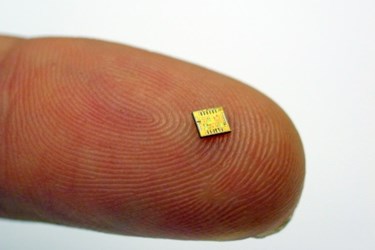Wirelessly Monitoring Biomarkers For Improved Healthcare
By Chuck Seegert, Ph.D.

Combine nanoscale blood testing with wearable tech for non-invasive monitoring, and you have the basis for a new home lab system. Patients at high risk for certain diseases may now have new options for real-time monitoring with a variety of capabilities.
Cardiac disease is a major concern and has been a major cause of death globally. Because of this, many attempts to monitor the disease via blood pressure and other non-invasive biometrics have been made.
While efforts to monitor heart disease have met with some success, a research team at Fraunhofer Institute for Applied Information Technology (Fraunhofer FIT) has developed a more comprehensive solution, according to a recent press release from the institute. At the heart of the system is a device called the “home unit.” It is a compact device that collects data from wireless, noninvasive wearable technologies like a Bluetooth-connected pulse oximeter and a WLAN-connected blood pressure monitor.
In addition to wireless technologies that monitor biometrics, the system can measure glucose, lactate, cholesterol, and a number of other cardiac-related biomarkers, according to the press release. These tests are facilitated by a special cartridge that requires a drop of blood from a needle stick. There is a microchip in the cartridge that helps detect the biomarkers at very low concentrations.
"Miniaturized sensors in the home unit, which can detect traces of the markers down to the nano level, analyze the blood sample," said professor Harald Mathis, head of the Department of Biomolecular Optical Systems at Fraunhofer FIT, in the press release.
Results from the home unit are then collated and sent to the patient’s doctor’s office via a secure internet connection and a smartphone app. This allows feedback to be sent to the patient.
Rapid and low-cost options are continually being developed in response to pressures to provide cheaper and higher quality healthcare. Recently, a system for monitoring congestive heart failure was introduced that included home monitoring options and remote interactions with a caregiver to improve disease outcomes.
Image Credit: Fraunhofer FIT
